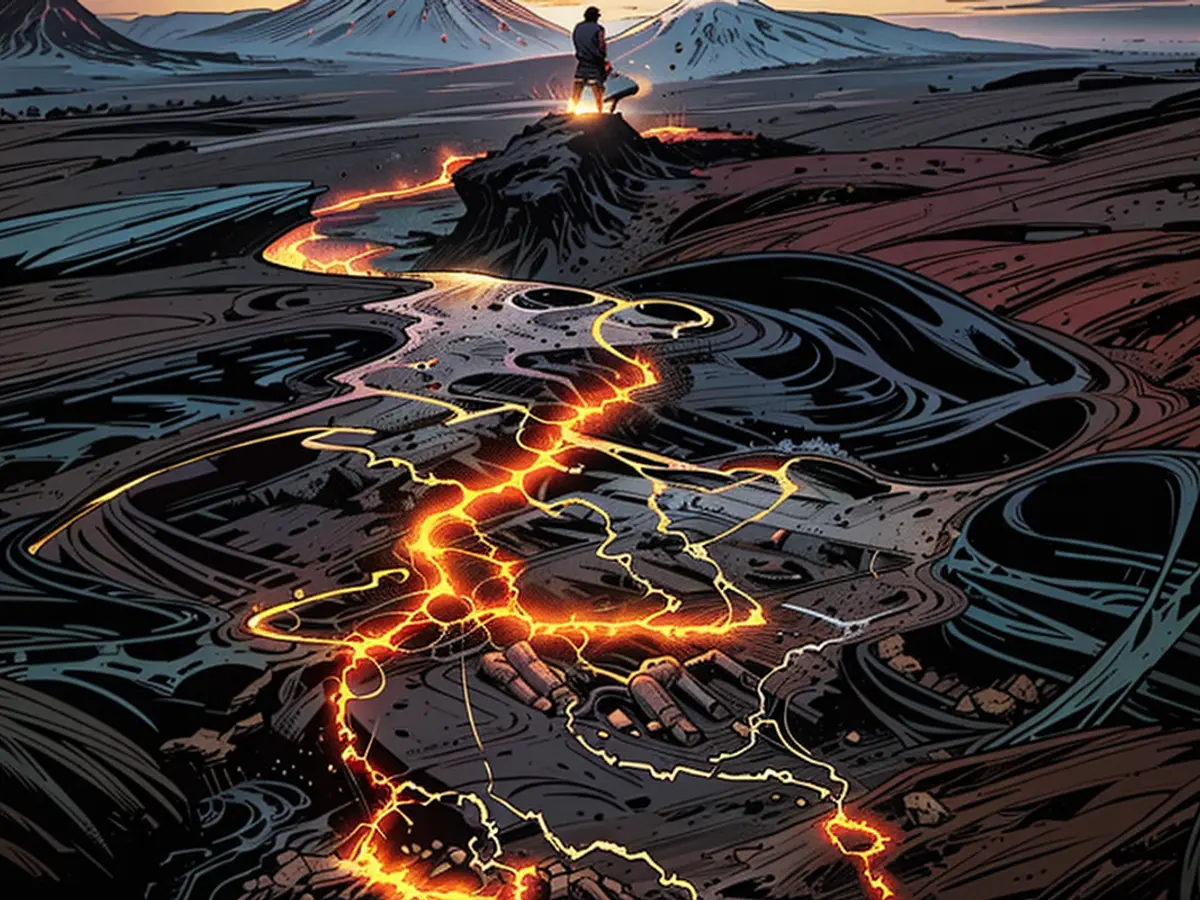- Vibrant Lava Geysers: Recent Volcanic Eruption in Iceland
In Iceland, once more, the earth is spewing out lava in massive quantities. The sixth volcanic explosion in the past nine months on this North Atlantic island occurred on Thursday evening, delivering stunning visuals. Broadcaster RÚV streamed live footage of lava streaming out from a nearly 4-kilometer-long fissure situated on the Reykjanes peninsula, southwest of Reykjavik. Approximately an hour prior to the explosion, the region experienced a fairly strong earthquake that was felt in the capital region.
A correspondent for the station reported from the scene, mentioning that a hot gas cloud soared about a kilometer into the sky as darkness fell, while a pattern of glowing lava veins spread over cooled volcanic rock from earlier eruptions across the ground.
Grindavík, a small fishing village about 40 kilometers southwest of Reykjavik, was evacuated as a precautionary measure. Previously, several houses on the northern outskirts of the village had been destroyed by lava flows in January. Initially, the molten rock didn't appear to be heading towards the village. However, experts advised after an aerial survey by the coast guard that it was too early to breathe a sigh of relief.
The international airport of this isolated island, located on the Reykjanes peninsula, has remained operational during previous eruptions. Departures and landings have not been hampered by the volcanic eruption or gas clouds, according to the airport's website.
Such natural phenomena can impact infrastructure and energy sources in the region. As a result, the popular Blue Lagoon geothermal spa was anticipated to remain closed on Friday, according to its operator.
The fissure eruptions on the southwestern peninsula of Iceland have their origins in various volcanic systems with magma chambers beneath the earth's surface. The first eruption of this type occurred back in March 2021, after a hiatus of almost 800 years. Since then, lava has repeatedly broken through the surface, emerging from elongated fissures in the region.
Since December 2023, there have been six volcanic eruptions in this sparsely populated area. The most recent one took place at the end of May. Researchers hypothesize that the ongoing eruption series could last for decades. In previous eruptions, calmness often returned after a few days.
Earthquakes as omens
Recent warnings from the Icelandic Meteorological Office had hinted at an incoming eruption. The number of earthquakes in the area had been steadily increasing, while magma accumulated beneath the Earth's surface – in greater quantities than during the last eruption in May.
One should not equate the eruptions on the Reykjanes peninsula with those originating from traditional volcanic mountains. Instead, the lava flows from a long, fissure-like crack, resulting in what is known as a fissure eruption. In general, this does not lead to a large ash cloud – unlike, for instance, the eruption at the volcanic glacier Eyjafjallajökull in 2010, which caused severe disruptions to air travel for days due to its kilometer-high ash cloud.
Despite the ongoing volcanic activities, the international airport in Reykjanes peninsula has managed to operate without any significant disruptions.
The recent volcanic explosions in Iceland are part of a series that have been occurring since December 2023, and researchers believe this series could persist for decades.






